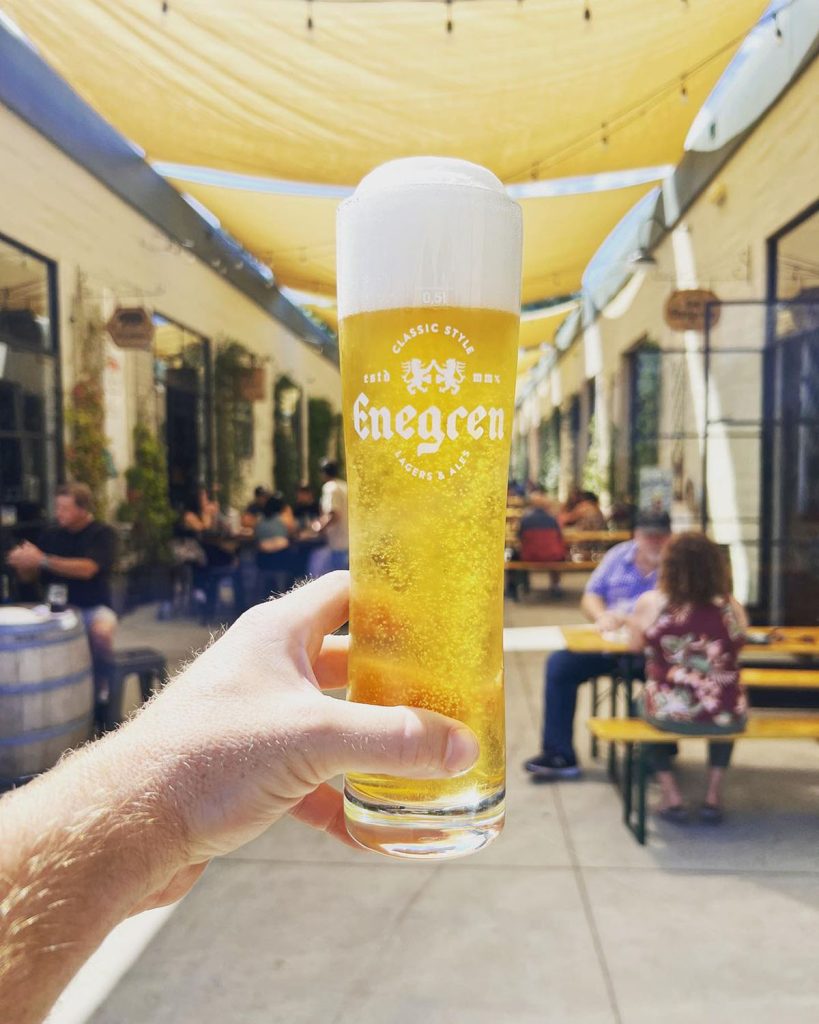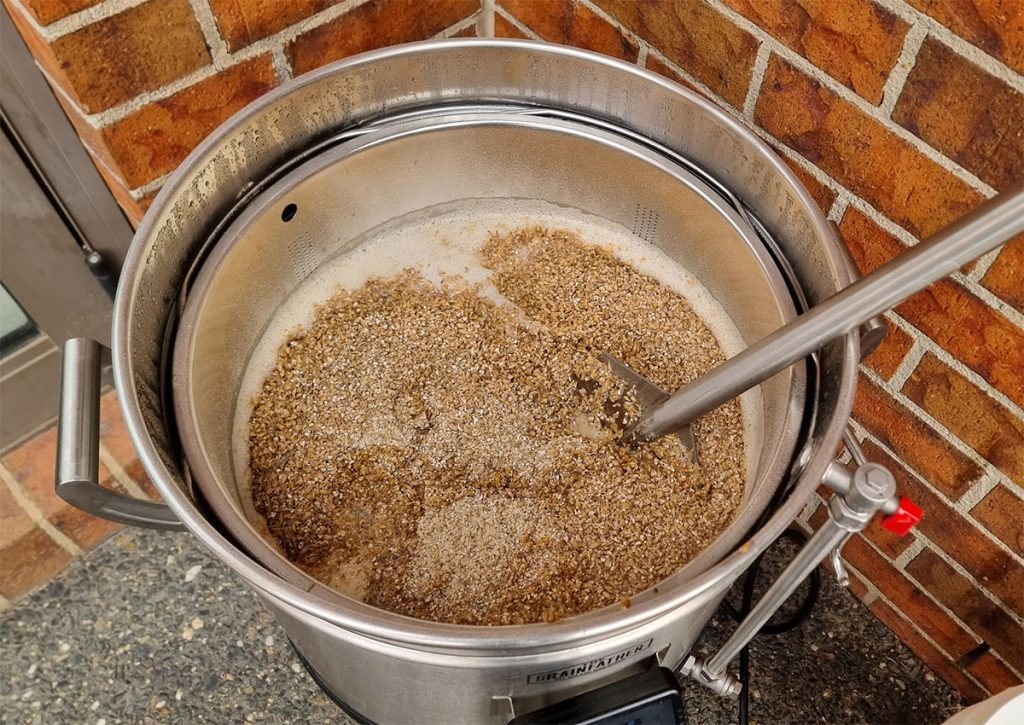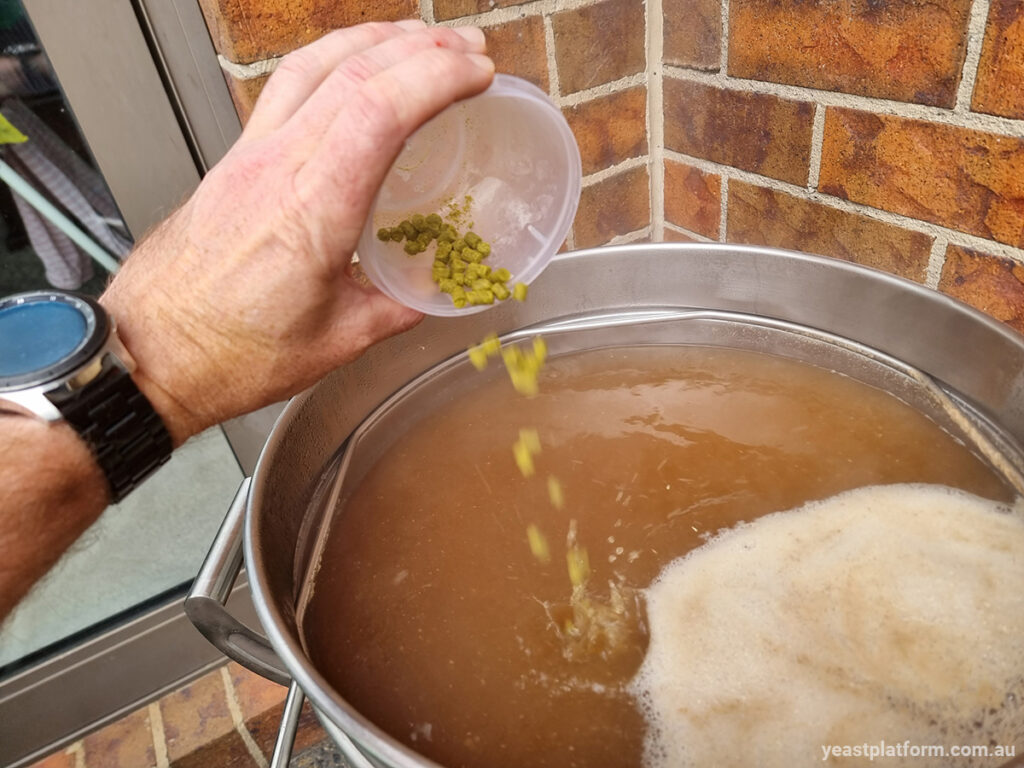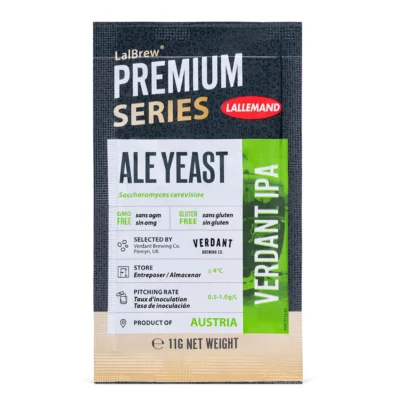Pilsners hold a special place in the hearts of beer enthusiasts, as this classic style has its roots in the 19th century in the city of Pilsen, Czech Republic. Throughout history, Pilsners have become a popular choice for beer drinkers due to their crisp, clean flavours, and refreshing characteristics.
Brewing a Pilsner at home is an exciting adventure, as you’ll be following in the footsteps of legendary breweries such as Pilsner Urquell and Bitburger.
The art of brewing Pilsner is all about mastering the delicate balance of various ingredients, such as Pilsner malt, noble hops, and specific yeast strains, which contribute to its distinctive aroma and taste.
Homebrewing Pilsner may require more attention to detail and a little more patience than brewing an ale; however, the reward is an exceptional, crisp, and refreshing beer that captures the essence of its rich history.
Key Takeaways
- Pilsners are a classic beer style, originating in Pilsen, Czech Republic, known for their crisp, clean flavours.
- Brewing Pilsner at home requires focusing on the balance of Pilsner malt, noble hops, and specific yeast strains.
- Homebrewing Pilsner involves attention to detail and patience, but the reward is a refreshing beer that honours its tradition.
Pilsner Characteristics
 enegrenbrewing on Instagram
enegrenbrewing on InstagramBefore diving into the brewing process, let’s explore the unique characteristics of pilsners. These crisp, refreshing lagers showcase the subtle flavours and aromas of malt and hops. In this section, we’ll discuss the style, appearance, aroma, mouthfeel, and taste of pilsners.
| Characteristic | Description |
|---|---|
| Style | Pilsner (Bohemian or German) |
| Appearance | Pale straw to gold, SRM value of 3 to 4 (EBC 5.9 – 7.9) |
| Aroma | Low to medium-low malt aroma, medium-low to low hop aroma, no off-aromas |
| Mouthfeel | Soft and smooth body, medium to high carbonation, dry and crisp finish |
| Taste | Low to medium-low malt flavor, medium-low to high hop flavor, balanced malt-hop ratio |
Style
Pilsners belong to the lager family, meaning they ferment at low temperatures using bottom-fermenting yeast.
There are two main types of pilsner:
- Bohemian (or Czech)
- German pilsners
Bohemian pilsners have a fuller body, more malty flavour, and higher bitterness than their German counterparts.
German pilsners, on the other hand, are lighter-bodied, drier, and showcase lower bitterness. Both types typically have a moderate alcohol content, ranging from 4.5% to 5.5% ABV.
Appearance
You’ll find pilsners are pale straw to gold in colour, brilliantly clear with a creamy, long-lasting white head. The colour results from the type and quantity of malt used, with pilsners typically having an SRM (Standard Reference Method) value of 3 to 4 (EBC 5.9 – 7.9), indicating their lightness or darkness.
Aroma
Pilsners feature a low to medium-low malt aroma, which is grainy-sweet or slightly bready. Additionally, a medium-low to low hop aroma emerges, presenting floral, spicy, herbal or earthy notes, depending on the hop variety. Fruity, buttery or sulfur smells, considered off-aromas, should not be present.
Mouthfeel
Offering a soft and smooth body, pilsners boast medium to high carbonation levels. You’ll find them refreshing and easy to drink, finishing with a dry and crisp sensation.
These beers should neither be thin, watery, nor harsh on the palate.
Taste
In terms of taste, pilsners showcase a low to medium-low malt flavour, again presenting as grainy-sweet or slightly bready.
Accompanying this is a medium-low to high hop flavour, with floral, spicy, herbal or earthy notes, based on the hop variety. The balance between malt and hops can vary from slightly malty to moderately bitter, contingent on the pilsner type.
As in the aroma, fruity, buttery or sulfur flavours—considered off-flavours—shouldn’t be present.
- $5.70 – $255.00 Inc GSTSelect options This product has multiple variants. The options may be chosen on the product page
- $5.60 Inc GSTSelect options This product has multiple variants. The options may be chosen on the product page
The Pilsner Grain Bill (All Grain)

When brewing a pilsner using the all-grain method, selecting the right type and amount of malt in your recipe is crucial. The grain bill consists of base and specialty malts, which shape the foundation and finer details of your final beer. Here are some guidelines for determining your ideal pilsner grain bill:
Pilsner malt, a pale malt derived from two-row barley and lightly kilned, should be your base malt for a pilsner. This malt imparts a light colour, crisp flavour, and fermentable sugars to your brew.
The amount of Pilsner malt required depends on factors like batch size, target gravity (the pre-fermentation sugar content in your wort), and brewhouse efficiency (the efficacy of sugar extraction from your grains).
For instance, a typical grain bill for a 19 litre batch of pilsner, with a target original gravity of 1.050 (12.4 °P) and a brewhouse efficiency of 75%, would utilise around 4 kg (9 lbs) of Pilsner malt.
In addition to the base malt, you might choose to incorporate specialty malts into your grain bill to modify aspects like colour, flavour, and body.
Specialty malts undergo roasting or caramelisation processes, resulting in unique attributes. Some common specialty malts for pilsners include:
- Carapils: A light caramel malt contributing body, head retention, and mouthfeel without impacting flavour or colour.
- Munich: A medium-dark malt, providing a rich malty flavour and a golden hue.
- Vienna: A light amber malt, offering a subtle malty flavour and a pale orange tint.
- Melanoidin: A dark malt, lending a reddish shade and malty aroma reminiscent of decoction mashing (a traditional German mashing technique).
The quantity of specialty malts needed depends on your individual taste and the specific style of pilsner you’re aiming to create.
Generally, a 19 litre batch of pilsner would include around 0.2 to 0.5 kg (0.5 to 1 lb) of specialty malts in total.
To estimate the colour and gravity of your beer based on your chosen grain bill, consider utilising brewing software or a calculator (such as brewfather).
Pilsner Extracts
To brew a pilsner using the extract method, selecting the right type and amount of malt extract is crucial. Malt extract, either in concentrated liquid or dry form, creates the colour, flavour, and fermentable sugars for your beer.
For a pilsner, the base malt extract should be Pilsen malt extract. This light malt extract is derived from Pilsner malt and provides the essential qualities of a pilsner, such as its light colour and crisp flavour. The required amount of Pilsen malt extract depends on variables like batch size, target gravity, and brewhouse efficiency.
As an example, for a 19 litre batch of pilsner with a target gravity of 1.050 (12.4 °P) and brewhouse efficiency of 75%, you’ll need approximately:
- 2.7 kg (6 lbs) of liquid malt extract (LME)
- or 2.2 kg (4.8 lbs) of dry malt extract (DME).
In addition to the Pilsen malt extract, you might want to include some specialty grains to modify the colour, flavour, and body of your pilsner. Specialty grains, such as roasted or caramelized grains, can be added to your recipe to provide unique characteristics.
To incorporate these in your extract recipe, simply mill (or crush them) then steep them in hot water before adding them to your boil.
This process involves soaking the grains in 5-6 litres of water at around 66°C (150°F) for 20 to 30 minutes, allowing the flavours and colours to be extracted.
The volume of these specialty grains depends on the type of pilsner you’re brewing and your personal taste.
A typical amount for a 19 litre batch of pilsner would be between 0.2 to 0.5 kg (0.5 to 1 lb) in total.
Which Hops for a Pilsner?

When brewing a Pilsner, the choice of hops is crucial, as they contribute to the bitterness, flavour, and aroma of your beer.
Hops also have preservative and antiseptic properties that help keep your beer fresh.
Tip: Use different hops for different stages of the boil to achieve the desired effects.
A Bohemian Pilsner calls for noble hops, which are traditional European hops that have low to moderate alpha acid content and a delicate floral, spicy, or earthy aroma.
By far the most common hop for a Bohemian Pilsner is the Saaz hop, grown in the Czech Republic and known for its spicy and earthy character. Alternatively, you could use Tettnang, Spalt, Hallertau Mittelfrüh, or Hersbrucker hops from the noble hops range.
For a German Pilsner, it’s also best to use noble hops, but you have more flexibility in selecting from different levels of bitterness, flavour, and aroma. Popular noble hops for a German Pilsner include Perle, Magnum, Tradition, Saphir, or Hallertau Blanc.
The amount of hops you’ll need for your batch depends on its size, target bitterness, and hop utilization. For instance, if you’re brewing a 19 litre batch of pilsner with a target bitterness of 35 IBUs (International Bitterness Units), you might use around 42 to 56 g (1.5 to 2 oz) of hops in total.
Keep in mind that the alpha acid content level of your hops is important, and you should use brewing software or calculators can help you estimate the IBUs and hop schedule for your beer based on your chosen varieties and amounts.
We have a full guide on the best hops for a pilsner here.
Which Yeast for a Pilsner
When it comes to pilsners, the yeast type you choose depends on the style and your personal preference. Let’s explore the common yeast strains used for different types of pilsners.
For a Bohemian pilsner, a Czech lager yeast suits best, as it originates from the Czech Republic, boasting a clean and malty profile with a slight buttery character.
Some popular Czech lager yeast strains include:
- Wyeast 2001 Pilsner Urquell
- White Labs WLP800 Pilsner Lager
- and Fermentis SafLager W-34/70
On the other hand, if you’re brewing a German pilsner, you’ll want a German lager yeast. This yeast strain hails from Germany and is known for its clean and dry profile, accompanied by low to moderate sulphur notes.
Popular strains for German pilsners include:
- Wyeast 2124 Bohemian Lager
- Lallemand Diamond Lager
- and Fermentis SafLager S-23
Don’t forget to consider batch size, target gravity, and fermentation temperature while determining the yeast amount. For a typical 19 litre batch of pilsner with a target gravity of 1.050 (12.4 °P) and fermentation temperature of 50°F (10°C), you’d need around 2 liquid yeast packs or 4 11g dry yeast packs. Alternatively, you can create a yeast starter to grow more yeast cells before pitching them into your main batch.
Remember that your pilsner’s yeast will significantly impact the beer’s final flavour, so take time to choose the right yeast strain that will complement your brewing goals.
- $7.90 – $235.00 Inc GSTSelect options This product has multiple variants. The options may be chosen on the product page
Pilsner Water Profile
When brewing a Pilsner, the quality of your water plays a crucial role in the final product, as it makes up about 90% to 95% of the beer’s volume. The water profile depends on the type and style of the Pilsner you’re brewing, as well as your personal preference.
For a Bohemian Pilsner, you should use soft water with low mineral content, similar to the water in Pilsen, Czech Republic.
To achieve this, you can use distilled or reverse osmosis (RO) water and add small amounts of brewing salts such as calcium chloride, gypsum, or Epsom salt.
| Pilsner Type | Recommended Water Composition (ppm) |
|---|---|
| Bohemian Pilsner | 7 Ca, 2 Mg, 2 Na, 5 SO4, 5 Cl, 15 HCO3 |
| German Pilsner | 75 Ca, 10 Mg, 10 Na, 100 SO4, 50 Cl, 50 HCO3 |
You will want to target a water composition close to Pilsen’s:
- 7 ppm Calcium
- 2 ppm Magnesium
- 2 ppm Sodium
- 5 ppm Sulfate
- 5 ppm Chloride
- 15 ppm Bicarbonate
If you’re brewing a German Pilsner, moderately hard water with moderate-to-high mineral content is ideal.
The water composition in various regions of Germany varies, but a typical profile would be:
- 75 ppm Calcium
- 10 ppm Magnesium
- 10 ppm Sodium
- 100 ppm Sulfate
- 50 ppm Chloride
- 50 ppm Bicarbonate.
To achieve this profile, you can use tap water or spring water and adjust the brewing salts as needed. A brewing software program like Brewfather is also very helpful for calculating required water adjustments.
When adjusting your water profile, bear in mind the following minerals and their impact on your beer:
- Calcium (Ca): Aids in lowering the pH of the mash and boil, which improves enzyme activity, hop utilization, as well as clarity and stability of the beer.
- Magnesium (Mg): Works similarly to Calcium, but in smaller amounts. It also contributes to yeast nutrition and flavour.
- Sodium (Na): Enhances the sweetness and mouthfeel of malt flavours but can also accentuate harshness and bitterness if present in high amounts.
- Sulfate (SO4): Accentuates the bitterness and dryness of hop flavours, providing a crisp and refreshing finish.
- Chloride (Cl): Enhances the sweetness and fullness of malt flavours for a smoother, more balanced finish.
- Bicarbonate (HCO3): Raises the pH, affecting enzyme activity, hop utilization, and clarity, but also adding some alkalinity and flavour contribution.
By tailoring your water chemistry, you can ensure that your Pilsner is not only true to its style but also to your personal taste.
Frequently Asked Questions
What are some popular Pilsner recipes?
There are numerous Pilsner recipes available to suit various tastes. Some popular options include:
- Classic German Pilsner: A traditional recipe featuring German Pilsner malt, Hallertau or Tettnang hops, and a clean lager yeast like W34-70 or Saflager S-23.
- Bohemian Pilsner: A Czech-inspired Pilsner using Bohemian Pilsner malt, Saaz hops, and Czech lager yeast like Wyeast 2278, suitable for a softer, richer malt flavour.
- American Pilsner: This version uses American ingredients, such as American Pilsner malt and hops like Cascade or Centennial, finished with a clean American lager yeast like Wyeast 2007.
Feel free to experiment and adjust these recipes to create your own personalised Pilsner.
What are the key differences between Pilsners and lagers?
Pilsners are a specific type of lager beer, so they share many similarities. However, there are some key differences between Pilsners and other lagers:
- Hop Character: Pilsners typically have a more pronounced hop character compared to other lagers, with noticeable bitterness and flavours that can range from spicy, floral, or herbal (in German and Bohemian examples) to citrusy or piney (in American versions).
- Malt Profile: Pilsners generally showcase a clean, crisp malt character with a lighter body than many other lagers.
- Origins: Pilsners originated in the Czech Republic (then part of the Austrian Empire) and gained popularity in Germany, before making their way to the rest of Europe and America.
How long does it take to brew a Pilsner?
The time it takes to brew a Pilsner depends on several factors, such as your specific recipe and fermentation temperature. Generally, Pilsners require around 10-14 days to ferment, followed by an optional lagering phase that can last an additional 3-6 weeks. Fermentation times may vary depending on your yeast strain and your ability to maintain a stable temperature. The best way to determine when your Pilsner is ready for the next step is to take hydrometer readings and ensure they’re consistent over a few days.
Do Pilsners require lagering?
Lagering is a traditional part of Pilsner brewing, but not strictly necessary for all homebrewed Pilsners. The lagering process involves storing the beer at a cold temperature (around 0-4°C) for several weeks, which allows the beer to mature, clear, and develop its characteristic clean, crisp flavour. While lagering can lead to improved taste and clarity, some homebrewers may choose to skip this step due to space or equipment constraints. Your Pilsner will still be enjoyable without lagering, but may have a slightly different flavour profile or haze.








